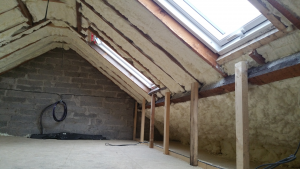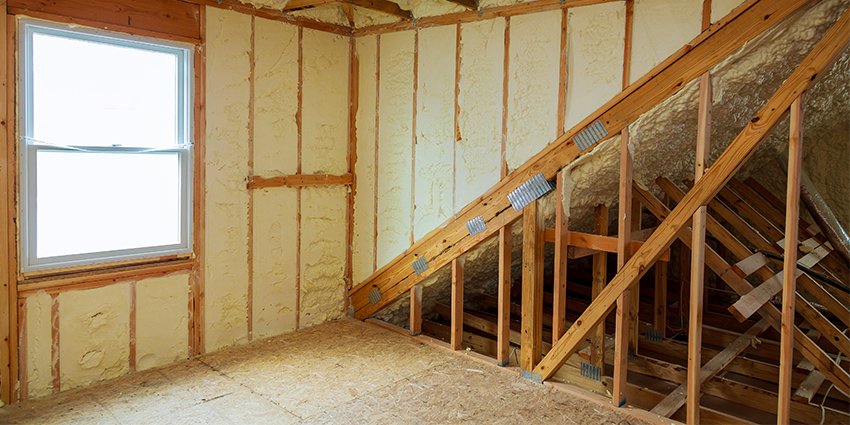Attic Spray Foam Insulation Enniskerry
3 Bed Semi Attic Insulation Enniskerry
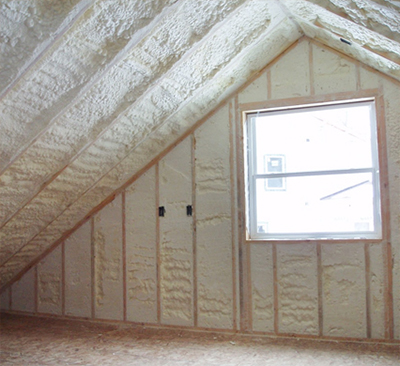
Attic Insulation Enniskerry
Spray foam works in many different conditions. Spray foam is useful in roofs, windows, attics, underfloor heating systems, interior and exterior walls, as well as roofs.
Spray foam insulation is not only warm and comfortable in winter but also cools your home in summer. It allows moisture-laden air, such as from the basement, to escape thanks to its structure and cell structure.
Benefits of Spray Foam Insulation for your home
Other applications include farm houses, industrial and commercial buildings, sheds as well shipping containers and vessels.
It creates an airtight barrier around your home, keeping out rain and cold winds. Other insulating products available today are far less effective in this regard. They allow heat to escape your home.
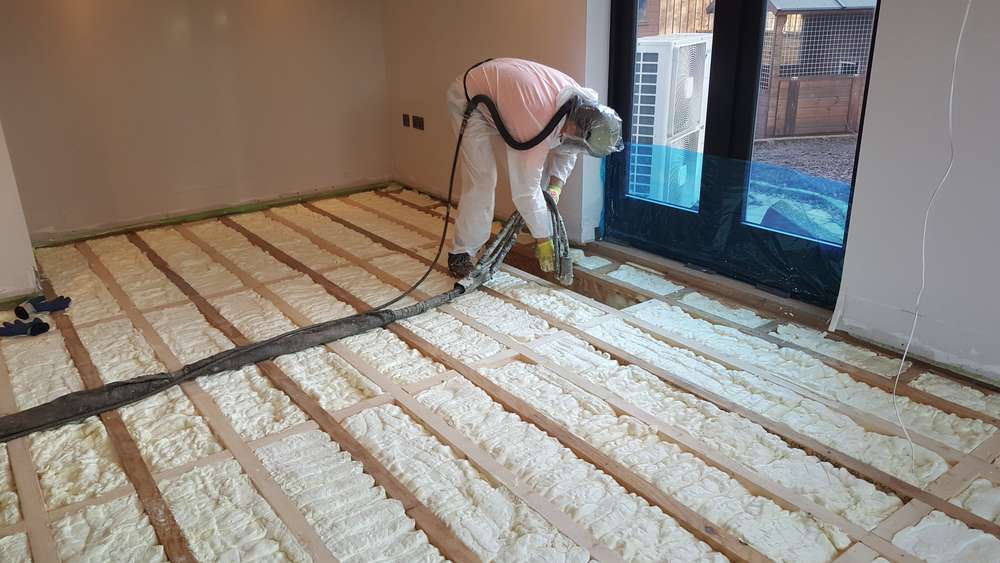
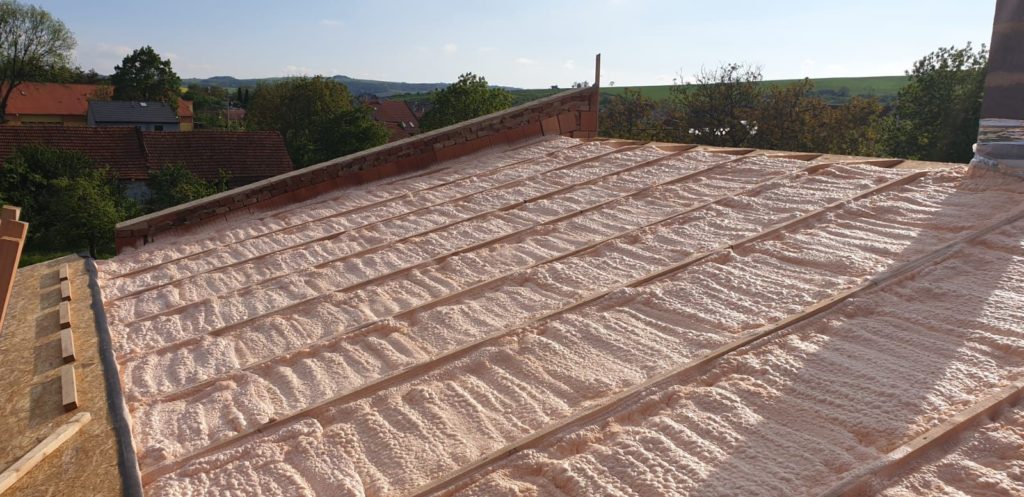
Cost Price Of Spray Foam Insulation
Spray foam insulation, which is the most effective insulation material, is undoubtedly the best. It is more efficient than traditional insulating materials like fiberglass, rock wool and cellulose.
Spray foam insulation is excellent as a sound barrier. Spray foam insulation reduces outside noise significantly. This is especially advantageous for homes or companies that are located in densely populated cities or near airports.
Insulate Your Enniskerry Property Properly
It’s commonly used to block sound from traveling between rooms or floors. It is especially useful for bathroom walls where noises from toilets and showers can cause nuisances.
It is very easy to use and doesn’t cause any disruption to everyday life.
An Irish traditional home can be insulation in one day.
It reduces the noise of in-wall and under-floor pipes by encasing them and isolating them.
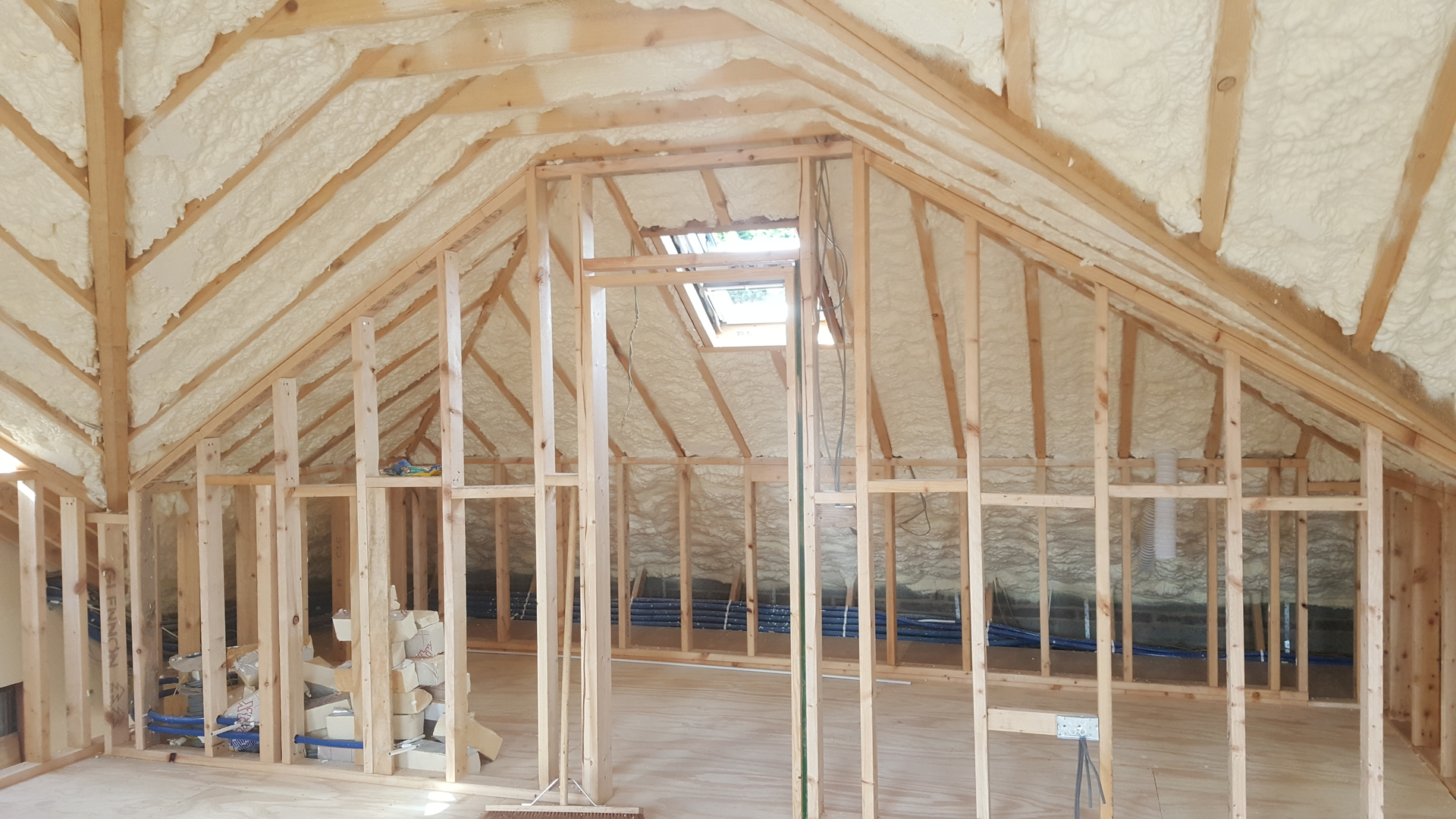
Boards should be laid over the joists if the loft or attic is to be used for storage. Insulation will not be thick enough if you insulate only between the joists.
It dramatically reduces sound transference when used within walls and attics, roofs, floors and roofs. This is in contrast to fibreglass and rock wool as well as polystyrene and polystyreneboards. Its dense composition, and its application process results in an envelope that is completely airtight. It blocks sound from outside, including traffic, pedestrianised streets, and areas near airports.
It also prevents sound generated from within a building from reaching adjacent floors or the floors below them. Spray foam insulation would dramatically reduce the noises that are often generated in a structure.
Spray foam insulation that is both flexible, and filled with millions and millions of air bubbles will absorb the vibrations of the floor. The floor’s wooden members and floor will also be affected. Spray foam insulation reduces sound transmission by sealing any cracks or crevices that airborne noises can travel through.
Spray foam insulation can also dampen, if not completely eliminate, sounds from floors such as water moving through pipes. It surrounds pipes securely, preventing them rattling. It also prevents hot water from flowing through the pipes, which can cause the wooded beams to creak, crackle and expand.
It also stops heat from escaping to the upper levels, which makes the lower floors cooler and requires more heat to keep them warm.
If the loft is accessible and free from damp or condensation, insulation should be simple. In many cases, you can do it yourself.
Uninsulated homes lose 25% of their heat through their roofs. Insulating your flat roof, attic, or loft can help reduce heat loss and decrease your heating costs.
If you have access to your loft joists and it is easy to use, mineral wool insulation rolls can be used. The insulation layer is placed between the joists (the horizontal beams that make the loft’s floor) and then another layer is applied at right angles to cover all the joists.
You can raise the floor to get sufficient insulation. This can be done by installing timber battens along the joists or by purchasing purpose-built plastic leg that attach to the joists to support the new floor. To prevent condensation from forming on the boards’ undersides, it is important to ventilate the air gap between insulation and boards.
Do not squash the mineral Wool when fitting the boards onto the top. This will cause it to lose its insulation properties.
Insulation stops heat loss from living spaces. By making your loft space cool, you can prevent damp or condensation from developing. Consider increasing ventilation if you’re installing loft insulation by yourself.
A second way to insulate your loft, is to install insulation between and over rafters. These sloping woods make up the roof. You can either use rigid insulation boards which are cut precisely to fit your loft, or spray foam insulation between the roof rafters.
Some companies offer to fix a roof that is leaking or damaged by applying foam insulation directly to the roof. This will not solve the problem. We don’t recommend this. Like any type of insulation you should ensure that your roof is in good repair before adding insulation.
You can use your loft to heat the space, but you will need to create a separate room on the roof.
If you are planning to use your loft for living, or you already have it, you will need insulation between the heated space and unheated area.
Your house must allow air to flow freely in order for it to stay fresh, dry, and healthy. Good installers will ensure that there is no obstruction or sealing of any inadvertent ventilation. When DIY insulation is done, ensure that you don’t cover any vents grilles or airbricks.
If you have difficulty accessing your loft, a professional can install the appropriate insulation. The specialist equipment will blow the insulation material into any difficult space. They can use mineral wool fibre, treated with cellulose, or polyurethane.
Flat roof insulation could help you save similar heating bills as loft insulation. The size of your flat roof will affect the savings.
You can probably insulate your loft yourself if it is accessible and does not have damp problems. Professional installation is recommended for those with damp problems and more complicated insulation systems.
Your loft hatch could become colder due to the cooler air. This can be prevented by installing an insulated hatch in your loft and putting strips of draught-exclusion material around the hatch edges.
Insulating the ground floor of your property is a great option to keep it warm and also lower your emissions.
Insulating a loft is an effective way to lower heating bills, be more efficient and warm your home in the winter. It doesn’t matter if you have insulation in place, but it is important to get the right amount to make it work.
Loft floor rolls – These are the more traditional option. They are rolled along the loft’s floors. These are easier than insulated floor boards and require less tools and take less time to lay. They come in both loose and encapsulated (blankets) rolls. These can be used to create base and top layers. They can be boarded with stilts to make a raised platform for storage.
These suggestions and recommended items aren’t included in this article’s list of materials or tools. It is important to make sure that you have all the information you need before you start insulation your loft floor.
There may be some insulation in your home, but it may not work well. This could happen if the insulation isn’t topped up regularly or has been compressed by storage board. It is possible for loft floors to be as low as 25mm (deeper) in older properties.
Good news is that you don’t need to remove existing loft floor insulation. To reach the recommended level, simply add one or more layers to it. You will find more information about the recommended amount in the article.
The spacing of your loft floor’s joists will determine the width roll you choose. This is because insulation is rolled between these joints. We recommend selecting one that is close to your joist spacing. It will reduce the need to trim.
The insulation must meet the requirements for thermal resistance. You can also measure the insulation’s thickness using a faster method if you’re only installing loft rolls. You can find more information in the section “How to calculate loft floor insulation thickness”

Parkhill, Dublin
01 5255297
